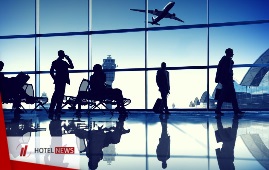
A 4% increase on the previous year which is also forecast for 2020, confirming tourism as a leading and resilient economic sector, especially in view of current uncertainties. By the same token, this calls for such growth to be managed responsibly so as to best seize the opportunities tourism can generate for communities around the world. According to the first comprehensive report on global tourism numbers and trends of the new decade, the latest UNWTO World Tourism Barometer, this represents the tenth consecutive year of growth. All regions saw a rise in international arrivals in 2019. However, uncertainty surrounding Brexit, the collapse of Thomas Cook, geopolitical and social tensions and the global economic slowdown all contributed to a slower growth in 2019, when compared to the exceptional rates of 2017 and 2018. This slowdown affected mainly advanced economies and particularly Europe and Asia and the Pacific. Looking ahead, growth of 3% to 4% is predicted for 2020, an outlook reflected in the latest UNWTO Confidence Index which shows a cautious optimism: 47% of participants believe tourism will perform better and 43% at the same level of 2019. Major sporting events, including the Tokyo Olympics, and cultural events such as Expo 2020 Dubai are expected to have a positive impact on the sector. Responsible growth Presenting the results, UNWTO Secretary-General Zurab Pololikashvili stressed that “in these times of uncertainty and volatility, tourism remains a reliable economic sector”. Against the backdrop of recently downgraded global economic perspectives, international trade tensions, social unrest and geopolitical uncertainty, “our sector keeps outpacing the world economy and calling upon us to not only grow but to grow better”, he added. Given tourism’s position as a top export sector and creator of employment, UNWTO advocates the need for responsible growth. Tourism has, therefore, a place at the heart of global development policies, and the opportunity to gain further political recognition and make a real impact as the Decade of Action gets underway, leaving just ten years to fulfill the 2030 Agenda and its 17 Sustainable Development Goals. The Middle East leads The Middle East has emerged as the fastest-growing region for international tourism arrivals in 2019, growing at almost double the global average (+8%). Growth in Asia and the Pacific slowed down but still showed above-average growth, with international arrivals up 5%. Europe where growth was also slower than in previous years (+4%) continues to lead in terms of international arrivals numbers, welcoming 743 million international tourists last year (51% of the global market). The Americas (+2%) showed a mixed picture as many island destinations in the Caribbean consolidated their recovery after the 2017 hurricanes while arrivals fell in South America due partly to ongoing social and political turmoil. Limited data available for Africa (+4%) points to continued strong results in North Africa (+9%) while arrivals in Sub-Saharan Africa grew slower in 2019 (+1.5%). Tourism spending still strong Against a backdrop of global economic slowdown, tourism spending continued to grow, most notably among the world’s top ten spenders. France reported the strongest increase in international tourism expenditure among the world’s top ten outbound markets (+11%), while the United States (+6%) led growth in absolute terms, aided by a strong dollar. However, some large emerging markets such as Brazil and Saudi Arabia reported declines in tourism spending. China, the world’s top source market saw outbound trips increase by 14% in the first half of 2019, though expenditure fell 4%. Tourism delivering ‘much-needed opportunities’ “The number of destinations earning US$1 billion or more from international tourism has almost doubled since 1998,” adds Mr Pololikashvili. “The challenge we face is to make sure the benefits are shared as widely as possible and that nobody is left behind. In 2020, UNWTO celebrates the Year of Tourism and Rural Development, and we hope to see our sector lead positive change in rural communities, creating jobs and opportunities, driving economic growth and preserving culture.” This latest evidence of the strength and resilience of the tourism sector comes as the UN celebrates its 75th anniversary. During 2020, through the UN75 initiative the UN is carrying out the largest, most inclusive conversation on the role of global cooperation in building a better future for all, with tourism to be high on the agenda.
Create: Jan 26, 2020 Edit: Jan 26, 2020 International News
Voice on command is not just for the guestroom; Hoteliers are finding the Google Assistant’s interpreter mode + Volara to easily and accurately streamline guest communication Research suggests that customer-experience (CX) technologies that serve every touchpoint, add personalization and drive satisfaction were at the top of operators’ wish lists for 2020. To be effective and deliver a rapid return on investment, these solutions must successfully delight guests, increase operational efficiencies, inspire loyalty, and generate profits. One technology that is checking all these boxes – yet is often overlooked – is digital voice translation. Considering that 55% of households are expected to own smart speaker devices by 2022 and 50% of all online searches will be voice-based by 2020, demand for hyper-convenient voice interactions while traveling is on the rise. Powering rooms with voice controls is gaining momentum (30% of hoteliers say they plan to bring voice controls to the guestroom in the coming year), but hoteliers need to expand their voice strategies beyond those four walls to drive customer satisfaction, loyalty and revenues – especially if the hotel or brand is favored by international travelers. Global Travel Growth Sparks Demand for Voice Translation Amadeus commissioned a study to explore the trends shaping the future of travel. What it found was that Asia – home to about 4.46 billion people speaking nearly 2,300 languages – will account for almost 22% of global arrivals by 2020 (up from 18% in 2008) and the region’s residents will represent 32% of travel spending by 2020. To compete for a share of these travel dollars, hoteliers will need to communicate with these visitors who are fluent in Chinese, Hindi, English, Russian, Indonesian and Japanese. Furthermore, Europe is expected to produce 400 million more outbound travelers in 2020 than in prior years, most of whom will be speaking Russian, German, French, English, Turkish, Italian, Spanish, Ukrainian, Polish and Dutch. To help people better connect and get help, the Google Assistant introduced a featured called interpreter mode that translates conversations in real time. Provisioned and managed by Volara, named the ‘Best Voice Activated Tech Product of 2020’ by HotelTechReport last week, the technology is now being rolled out to hotels that will enable staff to communicate with global guests easily – and in their native language. The new voice translation technology is improving the quality of interactions between hotel staff and guests, resulting in better communications and high-value service. Google Assistant’s Interpreter Mode can translate 29 languages in real time, including: Arabic, Chinese (Mandarin and Cantonese), Czech, Danish, Dutch, English, Finnish, French, German, Greek, Hindi, Hungarian, Indonesian, Italian, Japanese, Korean, Polish, Portuguese, Romanian, Russian, Slovak, Spanish, Swedish, Thai, Turkish, Ukrainian and Vietnamese. With Volara’s support, hotels can receive a Google Nest Hub to place at their front desk or Concierge station. When a guest needing translation assistance approaches, the staff simply says “Hey, Google, be my Spanish interpreter.” Then, the interpreter mode will show text on the screen that translates their words as they speak and repeat the message in English. This technology will enable international travelers to receive voice-automated professional hospitality in real time when they travel. The Google Assistant’s Interpreter Mode + Volara Places Hyper-Focus on Staff While this translation technology is driving hyper-convenient interactions with guests, it is also enabling hoteliers to elevate their staff. According to the 2019 Customer Engagement Technology Study, 42% of hoteliers will be investing in staff-facing technologies in 2020 to enhance the customer experience. Happy employees mean happy guests, and happy guests spend more money. By giving hotel staff tools that will make it easier for them to do their jobs, it will ultimately increase guest satisfaction and drive revenues. Perhaps that’s why 27% of hoteliers say they plan to add guest-facing self-service technology next year, and 24% are looking for technologies that automate service – both of which can be accomplished by the Google Assistant interpreter mode. When looking at the key to unlocking ROI from customer experience technology, 2019 CET Study authors Daniel Connolly, Dean of the College of Business & Public Administration at Drake University, and Jungsun (Sunny) Kim, Associate Professor at the William F. Harrah College of Hospitality, UNLV, had this to say: “To remain relevant and competitive, hospitality leaders must be agile enough to adapt to shifting consumer demands and have a willingness to take calculated risks into uncharted territory if they are to stand out and capture new market share.” Digital voice translation technology may be uncharted territory to some, but those agile hotels and brands who are embracing it are finding it to be the missing link for improving guest engagement.
Create: Jan 18, 2020 Edit: Jan 18, 2020 International News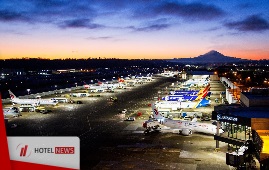
The research explores IT trends in digital transformation, mobile services, emerging technologies and much more. Similar to previous years, the industry IT spend projections for 2020 are revealed. Airlines and airports spend a record $50 billion on improving the passenger experience - and it is paying off. SITA’s Air Transport IT Insights report is well established as the global benchmark research for the air transport industry. The airports participating in this year’s research represent 36% of a global airport industry of coverage with 264 airports represented. The airline respondents represent a top of 200 airline and Senior IT executives with 30 % of the global passenger traffic coverage. The 2019 results once again provide a clear insight on the air transport industry’s IT strategic thinking and developments.
Create: Jan 18, 2020 Edit: Jan 18, 2020 International News
Frontline Employee Recruitment and Selection Technique 1 Design Creative Job Announcements; In order to draw a strong applicant pool for open posi- tions, the position announcements must be well-crafted. The hotel’s marketing department should either write or help edit such descriptions. Without sacrificing truth in advertising, creative-minded marketers can often produce more interest- ing and appealing announcements than those who are more operations-minded. Technique 2 Foster Relationships with Educational Institutions; Often, the best line-level associates and entry-level manag- ers can be drawn from trade schools, colleges, and universities that offer hospitality management programs. All hotels (even free-standing, independent hotels) should have active relation- ships with one or more hospitality educational institutions. Technique 3 Participate in Career Events; A representative from the hotel’s management team should speak at local high school career days. Not only does this exposure foster positive community relations, but also the students are a good source of potential employees for certain positions. Technique 4 Encourage Employee Referrals; Line-level associates should be encouraged to recruit their friends for open positions. Because the line-level employee is knowledgeable about the hotel’s working culture and also knows his/her friends, this combination of knowledge puts him/her in an informed position to assess the potential match. Technique 5 Utilize 360-Degree Interviewing; Utilize 360-degree interviewing in which a candidate is interviewed not only by who s/he will be reporting to, but also by peers and potential subordinates. While this approach mandates interview training, there are several benefits. Namely, when a candidate is interviewed by future subordi- nates, his/her emotional intelligence, and rapport-building skills can be assessed. The 360-degree interviewing also gives those involved a sense of buy-in and engenders an empower- ment culture. Technique 6 Use Panel-Style Interviewing; Front-of-the-house position candidates should be sub- jected to the panel-style interviewing in which they are interviewed by more than one person at once. Panel-style interviewing allows for the ability to test a candidate’s confi- dence and conversational ability in a situation in which some would find intimidating. For the purpose of practicality, a panel interviewing approach can be combined with the 360 degree interviewing described in the previous technique. Technique 7 Encourage Multiple-Day Interviewing; Whenever possible, applicants for the line-level positions should be asked to return for interviews on more than one day in order to gauge their dependability and demeanor at various points in time. Technique 8 Assess Applicant Conversational Ability; During interviews, front-of-the-house applicants should be asked questions that test their conversational abilities. One such question might include ‘If an alien lands on earth, how would you describe to the alien how to make a peanut butter and jelly sandwich?’ Technique 9 Assess Applicant Creativity; During interviews, front-of-the-house applicants should be asked to complete tasks that assess their creative talents. For instance, they could be given four minutes to write all of the uses that can be thought of for an object (e.g., a blanket) and then given four more minutes to write all of the uses that can be thought of for a different object (e.g., a brick). This task is termed a divergence test, and responses can be rated based upon the following criteria : 1- F luency—how many meaningful ideas are generated in response to the stimuli? 2- O riginality—how rare are the given responses? 3- E laboration—how much detail is contained in the responses? Technique 10 Assess Applicant Team-Mentality; During interviews, front-of-the-house applicants should be asked to tell a story about a time when they delivered exceptional customer service experience either at a hotel or any other service business. Candidates who recount stories in which they worked with past coworkers to deliver the experi- ence are likely more team-oriented than those who only discuss their own actions . Technique 11 Assess Applicant Problem Solving Skills; During interviews, a technique should be used to gauge the problem-solving skills of frontline associates. One such technique entails showing the candidate a container filled with small items, such as paperclips, and asking how s/he would go about estimating the number of items in the con- tainer (without opening it). Technique 12 Assess Applicant Innovativeness; On the application form for college students to intern at the hotel, ask the internship applicants to write a paragraph detailing a creative solution to a problem. For example: “Please describe one innovative solution to reducing guests’ perceived waiting times at check-in.” Technique 13 Incorporate a Walk-Through During an Interview; As part of the interview process, walk the applicant around the job area and observe how s/he interacts with the employ- ees as well as the guests. These observations provide a glimpse into the likely tone of interactions they will have if hired. In addition, when you let him/her see the work area and tasks, s/he may decide this is not a good fit or might become more excited about the prospect of working there. Technique 14 Incorporate a Slideshow During an Interview; When interviewing a job candidate, if the interviewer is pleased with the performance of the candidate, the inter- viewer should complete the meeting by showing the can- didate a slideshow on his/her laptop. The slideshow should include pictures of team members and pictures of them interacting. While viewing the pictures, stories can be shared regarding how the team members have been developed to be key players. Technique 15 Reinforce Reputation During an Interview; When interviewing a job candidate, if the interviewer is pleased with the performance of the candidate, the inter- viewer should make a point of telling the applicant about some of the accolades won by the hotel, the brand, and/or the man- agement company.
Create: Jan 18, 2020 Edit: Mar 7, 2020 Hotel Management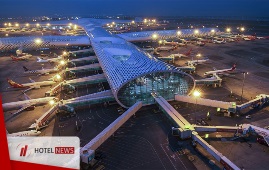
Airlines and airports in China are moving to another level of passenger service: They are embracing artificial intelligence and automation to provide the hyper-personalized self-service experience their passengers are demanding. According to the SITA 2019 China IT Insights, China’s airlines and airports are using these technologies to expand mobile services and automating the journey with self-service every step of the way. A key technology that is attracting investment is artificial intelligence (AI). SITA’s China IT Insights reveals that 88% of both airlines and airports are planning major programs, or R&D, with AI by 2022 and they are focusing on virtual agents and chatbots. This investment matches the demands from passengers; SITA’s research of passengers in China shows that 64% of them want a digital travel concierge. Already nearly half (43%) of airlines in China have AI-driven chatbot customer services and the planned investment should see the availability of them rising quickly over the coming years. May Zhou, Vice President and General Manager of SITA China, speaking at the SITA China Air Transport IT Summit in Nanning, said: “China’s airlines and airports have a strong record in embracing technology and automation to drive efficient operations and high levels of passenger services. Now they are moving to the next level where they will harness artificial intelligence to deliver more services, faster and to more people.” For passengers of China’s airlines and airports, self-service has reached a strong level of maturity, but a step-change is coming as biometrics is being adopted. Today, 27% of airports have self-boarding gates using biometrics with travel documents but in just three years this will jump to 66%. And more than half of the airports have plans for secure single biometric tokens for all touch points by 2022. Airlines too are committing to self-boarding gates using biometrics with ID, 60% are planning to use them driving a secure and seamless passenger experience right through the airport with the next three years. Zhou added: “The adoption of self-service by passengers across China has been very encouraging for airlines and airports. At SITA, we see many in the industry who are now ready and planning to add biometrics to bring self-service to the next level.” Mobile services are vital to meet China passengers’ demands and by 2022, all airlines and 93% of airports are planning investments in them. Services including flight discovery, airline offers, check-in and flight status notifications via mobile are already provided by all airlines. One fifth are also using mobiles to sell newspapers, magazines and movies/TV to passengers. Airports too are investing in mobile services to offer a more personalized experience for passengers. Services including, notifications about flight and airport status, and customer relationship management are well established and are offered by up to 81% of airports. Keeping the passenger informed and connected is not only what China’s airports are providing via mobile, they are also facilitating mobile payments. Close to three quarters enable passengers to buy airport services and allow cashless payments via mobile. This hyper-personalized service via mobile confirms it as a vital tool for China passengers. The report highlights that blockchain technology is another key area of investment for airlines, today only 24% have major programs, or R&D, planned but this is set to jump to 80% by 2022. This is in line with the recent trends and commitments to blockchain technology in the country.
Create: Jan 7, 2020 Edit: Jan 7, 2020 International News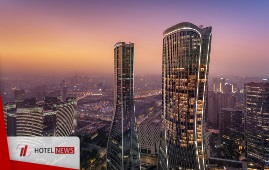
Hotel industry and travel news from around the Asia Pacific region: Adventure travel on the rise in China, Silkari acquires management rights of Oaks Lagoon in Port Douglas and more... Hana Financial Investment and Hotel Lotte to Acquire The Hotel at The Mark for USD175 Million Korean-based brokerage firm, Hana Financial Investment Company Limited (“Hana”), and Korea-based hospitality company, Hotel Lotte Company Limited (“Hotel Lotte”) have acquired the 189-key The Hotel at The Mark from US-based private equity firm, Stockbridge Capital Group, under a 70:30 real estate investment trust, for USD175 million. The luxury hotel is part of a 44-story F5 Tower in downtown Seattle and occupies the lower 16 floors. Subsequent to the acquisition, the hotel is set to open under the brand name of Lotte Hotel Seattle in June 2020. The acquisition is part of Hotel Lotte’s effort to expand abroad to better compete with global hotel chains. Silkari Acquires Management Rights of Oaks Lagoon in Port Douglas Australia-based luxury accommodation brand, Silkari Hotels (“Silkari”), has acquired the management rights of 175-key Oaks Lagoon in Port Douglas for an undisclosed price. Located approximately 50-minutes north of Cairns International Airport, the high-end apartment complex is set in a tropical complex around six lagoon-style pools. Previously managed by Thailand-based Minor Hotel Group, the property also features lap pool, fitness centre, tennis courts, a restaurant and bar, spa and conference facilities. Following the acquisition, Silkari will rename the property as Silkari Lagoons. Oak Lagoon is Silkari’s third accommodation asset, joining the 212-key Silkari Suites at Chatswood and Silkwood by Silkari, a 219-key and 37-townhouse complex in Pagewood, in Sydney's eastern suburbs. Dexus and Queensland Government Agree on AUD2.1 Billion Project in Australia The Queensland government and Australia-based real estate investment trust company, Dexus, has signed a facilitation agreement on a proposed AUD2.1 billion Waterfront Brisbane concept master plan. The Waterfront Brisbane development seeks to transform Brisbane’s Eagle Street Pier into a premier and leisure destination. Some key developments of the proposal plan include two premium office and mixed-use towers on the Eagle Street Pier site, as well as riverfront restaurants, casual dining places and retail units. The development will also feature a revitalised public realm which measures approximately 7,900 square metres of open space. Wharf facilities supporting commercial and river tourism operations will also be upgraded to support the delivery of a new City Reach ferry terminal. Construction on the Eagle Street Pier site is expected to commence in 2022 and the first tower to be delivered in 2026. India-based Park Hotels Files Draft Papers for INR10 billion Initial Public Offering India-based Apeejay Surrendra Park Hotels, which operates luxury boutique hotels under ‘The Park’ brand in India, has filed its draft red herring prospectus (“DRHP”) for an INR10 billion initial public offering (“IPO”). The IPO comprises a fresh offer of INR4 billion and an offer-for-sale (“OFS”) of up to INR6 billion by its existing investors and promoters. The net proceeds of the IPO will be utilized to repay debt and for general corporate purposes. The company currently manages 22 hotels with 1,937 rooms across 15 cities in India. As per the DRHP, it has a pipeline of 1,536 rooms expected to begin operations within the next three years. The company also has a retail food and beverage business under the ‘Flurys’ brand, which operates 38 outlets in Kolkata, and one outlet each in Navi Mumbai and New Delhi. Adventure Travel on the Rise in China According to a recent report, adventure travel as a kind of burgeoning outdoor tourism has gained increasing popularity among Chinese people who enjoys unique, fresh and exciting experience. As Chinese tourists become wealthier and more experienced, they show a growing desire to explore the world and try more adventurous activities such as climbing, diving, caving, sailing, paragliding, cycling and hiking. Estimated data from market consulting firm, Allied Market Research, showed that the global adventure tourism market was valued at USD586 billion in 2018 and is projected to reach around USD1.63 trillion in 2026. Chinese travellers are playing an increasingly important role in the global adventure tourism economy. According to China Adventure Association, there are 130 million to 170 million Chinese people participating in outdoor adventures, with annual growth of around 15%.
Create: Jan 7, 2020 Edit: Jan 7, 2020 International News
New YouGov data shows one in five tourists are now more interested in visiting Saudi Arabia for a vacation and according to the Saudi Commission for Tourism and National Heritage, China, UK, Malaysia, United States and Canada top the list of new arrivals since the launch of its first tourism visa. New YouGov research has identified a rise in tourism interest in Saudi Arabia from around the world, with one in five tourists more likely to visit Saudi Arabia for a vacation now than five years ago. The YouGov research surveyed 9,521 people across the USA, China and five key markets in Europe, revealed a growing interest in visiting Saudi Arabia. The data coincides with the Saudi Commission for Tourism and National Heritage (SCTH) revealing its top inbound source markets since Saudi Arabia's opened its doors to international tourism. Since the launch of the new tourism visa in September, visitors from China, UK, Malaysia, United States and Canada have topped the list of new arrivals welcomed into Saudi Arabia. Saudi's historic sites appear to be an important attraction for tourists to the Kingdom. Amongst those surveyed by YouGov, over one in five (22%) are keen to visit Jeddah's historic old town, a UNESCO World Heritage Site. Meanwhile, another UNESCO site, previously only known to a few travellers, is gaining a following amongst Chinese millennials. Al Ula now tops the list of destinations in the Arab world of a third of Chinese tourists under the age of 35. Italians top the list with 35% surveyed saying they would be more likely to visit Saudi Arabia following the new visa launch. British tourists were 15% more likely just ahead of Americans at 14%. The research also points to new opportunities for multi destination tourism growth. Of all respondents 73% reported a preference to visit several destinations rather than stay in one location. Arab League Tourism Ministers Meeting The research is released as Saudi Arabia takes on the presidency of the Arab League Tourism Ministers Meeting at the end of a historic year for the Kingdom. Tourism Ministers from across the Arab world met earlier this month for the 22nd Annual Arab Tourism Ministers Meeting. During the meeting they discussed opportunities for regional-wide tourism offerings and unified strategies for sustainable growth of the sector to benefit local communities and the environment. His Excellency Ahmad bin Aqil Al Khatib Chairman of the Board of Directors of the Saudi Commission for Tourism and National Heritage (SCTH) said: "This year marked the historic moment of Saudi Arabia opening its doors to the world. We are welcoming more visitors and investors than ever before. To those thinking of visiting Saudi Arabia in 2020, you won't find a warmer welcome anywhere in the world."
Create: Jan 6, 2020 Edit: Jan 6, 2020 International News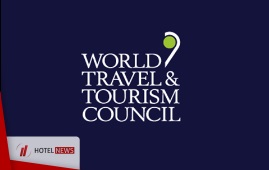
International visitor spending more important to cities than it is to countries, nine out of 10 top fastest growing cities in past decade are in emerging and developing countries and cities over reliant on domestic or international demand are more exposed to economic and geopolitical risks. The World Travel & Tourism Council (WTTC), which represents the global Travel & Tourism private sector, today released its comprehensive Cities Report for 2019. The report focuses on 73 major tourism city destinations, providing estimates of the GDP and employment directly generated by the Travel & Tourism sector, and highlights successful initiatives, strategies and policies that have been implemented. With more than half (55%) of the world’s population living in urban areas – due to increase to 68% over the next 30 years – cities have become the hubs for global economic growth and innovation, while also attracting more people who want to live and do business. The report reveals these 73 cities account for $691 billion in direct Travel & Tourism GDP, which represents 25% of the sector’s direct global GDP and directly accounts for over 17 million jobs. Additionally, in 2018, direct Travel & Tourism GDP across the cities, grew by 3.6%, above the overall city economy growth of 3.0%. The top 10 largest cities for direct Travel & Tourism contribution in 2018 offer diverse geographic representation, with cities such Shanghai, Paris, and Orlando all sitting in the top five. International visitor spending is often more important to cities than it is to countries overall. For example, Riyadh had international visitor spending accounting for 86% of total spending, while in Saudi Arabia as a whole, international visitor spending accounts for 45% of total spending. International visitors accounted for almost half (45%) of tourism spending across the 73 cities in the study, and an average spend of 29% for economies worldwide. Revenues from international visitors, will in some cases pay for city infrastructure projects, the provision of public workers and services that improve the quality of life for residents. For example, in London, international visitors spent $17.5 billion in 2018, nearly twice as much as the operating costs of Transport for London, and near four times the amount than the total expenditure for policing and crime within the city. Furthermore, international visitors in New York spent $21 billion last year, which is 3.8 times higher than the costs of the NYPD, and nearly twice the budget for city schools. The report also reveals all but one of the 10 global cities with the highest direct Travel & Tourism growth over the past decade, are in emerging and developing economies such as China, Turkey and the Philippines. Infrastructure development and prioritisation of tourism, has been a key driver of Travel & Tourism growth. The projected trends for 2018-2028 continue in this way, with all 10 coming from emerging and developing countries such as Morocco, India, Vietnam and Indonesia. According to the report, cities with an overreliance on domestic or international demand are more exposed to economic and geopolitical shocks. Some large Brazilian and Chinese cities which are highly reliant on domestic demand, could be exposed to changes in the domestic economy. On the other hand, cities which are more reliant on international demand and/or particular source markets, may be vulnerable to external disruptions. It also highlights several cities which demonstrate a more balanced split between domestic and international demand, including Cancún, Munich, Cairo and New York, which despite their geographical differences, all maintain a near perfect 50:50 split. Furthermore, a high degree of seasonality can also, at times put pressure on infrastructure, due to the heightened demand during a narrow timeframe. WTTC President & CEO, Gloria Guevara said: “Cities are an essential part of the Travel & Tourism sector, both culturally and economically, and their significance is set to increase over time. Achieving sustainable growth in cities requires reaching far beyond the sector itself, and into the broader urban agenda. As we go forward, the Travel & Tourism sector must be integrated into all aspects of a cities’ planning agenda. To drive true economic impact that can translate seamlessly into social benefits, a city must engage with all stakeholders, across the public and private sector, in order to establish the cities of the future. There is an opportunity to create long-term, sustainable change that can create real change for communities, especially within cities.” Read the WTTC City Travel & Tourism Impact Report 2019 here.
Create: Dec 24, 2019 Edit: Dec 24, 2019 International News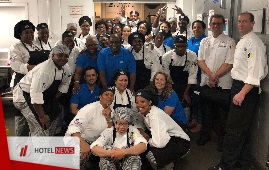
Hilton’s efforts will feed more than 160,000 annually, while diverting millions of pounds of food waste from landfills McLean, Va. – As the holiday season approaches, Hilton (NYSE: HLT) is announcing the expansion of its innovative food donation initiative to all of its managed hotels across the United States and Canada, representing one of the largest hotel food donation programs to date. The company expects to donate nearly 100 tons of food over the next year — enough to feed more than 160,000 people — while also diverting millions of pounds of food waste from landfills. “We have a century-long tradition at Hilton of playing a pioneering role in the hospitality industry, and it is inspiring to see our Team Members taking that spirit out into their communities to address the serious problem of food insecurity,” said Chef Marc Ehrler, Vice President of Americas Culinary, Hilton. “What started as a pilot in a few of our hotels has become a movement because our Team Members are motivated by a desire to have a positive impact.” Approximately one-third of food is wasted worldwide, yet global food insecurity remains endemic. It is estimated that more than 41 million Americans, including 13 million children, currently suffer from food insecurity. Meanwhile, most food waste ends up in landfills where it produces nearly 10% of the global greenhouse gas emissions that contribute significantly to climate change. In response, Hilton included an ambitious commitment to reduce its food waste by 50% by 2030 as part of the company’s Travel with Purpose 2030 Goals to cut its environmental footprint in half. Working with its environmental partner, World Wildlife Fund (WWF), Hilton undertook pilots at 50 hotels around the world to better understand food waste reduction challenges and opportunities in the hospitality industry. The pilots resulted in a number of innovations in Hilton hotels, from “no-waste” catering menus to thoughtfully designed buffet presentations. “At Hilton, we have incredible potential to solve some of society’s most pressing challenges through our hospitality mission,” said Katie Fallon, Executive Vice President of Corporate Affairs, responsible for Hilton’s corporate responsibility efforts. “We will keep at this until every one of our hotels around the world is diverting food waste to address the hunger crisis, so that our guests know that when they stay with us, they are traveling with a purpose.” Hilton also participated in the development of the Hotel Kitchen toolkit, a free tool developed by WWF and the American Hotel & Lodging Association with funding from the Rockefeller Foundation, which provides hotels with techniques to reduce food waste. Hilton has implemented the Hotel Kitchen toolkit and its associated trainings at all of its managed hotels in the Americas, while also making the toolkit available to its franchised properties. Now, Hilton is expanding its food waste initiative by encouraging its 300 managed hotels in the US and Canada to partner with local food rescue organizations to feed the hungry in their immediate communities. Each hotel will set a food waste diversion and donation goal for 2020 and report their progress so top performers can be recognized each month. Hotel teams will be able to select organizations to work with from a robust directory of food donation and diversion partners from across the country, as well as connect with one another to share best practices. Examples of existing partnerships include: 1. Hilton San Francisco Union Square has worked with Food Runners for nearly 15 years, providing nearly 2.5 tons of food to the organization annually. Food donated by Hilton is relayed by Food Runners’ volunteers to programs serving seniors, veterans and the homeless. 2. New York Hilton Midtown donates excess edible food to the Rethink Food Program, which picks up unused food from restaurants, farms, and other food purveyors to repurpose it into delicious and nutritious meals for under-served New Yorkers. 3. Waldorf Astoria Las Vegas donated nearly a ton of food over the last year to its partner Three Square, which distributes the food to local non-profit organizations. 4. Hilton’s food donation program is initially focused on the US and Canada because food donors in those countries are legally protected from liability under Good Samaritan laws, but the company’s goal is to expand these efforts globally. Donation efforts are already being driven at many of Hilton’s hotels around the world, including partnerships with groups like Scholars of Sustenance in Thailand and Indonesia, Oz Harvest and Addi Road Food Pantry in Australia, the Egyptian Food Bank, Equoevento in Italy, and Al Rescate, the first food rescue program created specifically for the hospitality industry in Mexico. Hilton measures its food waste progress using the company’s cloud-based corporate responsibility management system, LightStay. All properties are required to use LightStay to measure their environmental and social impact. So far this year, Hilton hotels in the Americas have diverted more than 6 million pounds of food waste from landfills, an equivalent of more than 11,000 MT of carbon emissions.
Create: Dec 16, 2019 Edit: Dec 16, 2019 International News
When stepping into a hotel these days, one cannot help but notice a growing wave of smoothie bowls, pilates poses, and mindfulness seminars. For many years, Accor has been at the forefront of the wellbeing movement, leading the way to integrate health and wellness into all aspects of the guest experience. In a new white paper, “It’s a Wellness World: The Global Shift Shaking up Our Business”, Accor explores the fundamental societal shift currently underway as the lifestyle goal of feeling healthier has moved out from beyond the walls of the spas and gyms and entered the mainstream. The informative report goes on to discuss the opportunities the wellness movement provides for hoteliers and some of the unique ways that Accor brands will deepen their commitments in this vital area throughout 2020 and beyond. “At Accor, our goal is to have guests experience a sense of wellbeing during their stay and that they leave feeling better than when they arrived; better rested, more nourished and in a happier state of mind,” said Emlyn Brown, Global Vice-President, Wellbeing, Luxury & Premium Brands, Accor. “A delighted guest is naturally more inspired to return. Therefore, by investing in holistic wellness experiences that help our guests feel good throughout the customer journey, we are establishing a model for strong revenue growth through return bookings, word-of-mouth referrals, and positive social media presence, contributing to a steady and sustainable business for years to come.” “It’s a Wellness World: The Global Shift Shaking up Our Business” reveals that 77% of consumers “take steps in their daily lives to stay healthy, make informed food choices, stay active and manage stress.”* Furthermore, some 56% of affluent travelers place a top priority on the statement, “I’m striving to become healthier in the coming year.”** The report also explores numerous economic and social factors that are driving the rise of wellness around the world. “As the wellness movement matures, and wellness offerings become a standard expectation within the hospitality industry, we are seeing a growing emphasis not only on healthy food options, relaxation, and movement but on such fundamental health necessities as clean water and air,” said Anne Dimon, CEO & President of the Wellness Tourism Association. “The mindset of wellness has evolved beyond spas and workout spaces, challenging the hospitality industry to consider how it integrates other health considerations such mindfulness and time spent in nature, along with environmental concerns – such as reducing indoor pollution and eliminating plastics – into its daily operations.” Accor’s well-being white paper will act as a catalyst to help energize the company’s wellness teams globally, while also informing and enhancing the five key pillars that guide Accor’s overall approach to well-being – Active Nutrition, Holistic Design, Bodies in Movement, Leveraging Spa, and Embracing Mindfulness – all of which are adapted and adopted by the company’s hotel brands based on a number of important factors including guest preference, demographics, brand positioning, culture and location. The report also delves deeper into this tailored approach and showcases several examples of how some of Accor’s leading hotel brands are uniquely evolving with the wellness movement. For example: Raffles Hotels & Resorts creates bespoke experiences to enhance guests’ emotional wellbeing, allowing them the opportunity to experience serenity, harmony, and pleasure. The brand is employing Feng Shui and Biophilia techniques to bring peace and balance to its interior spaces; menus designed to enhance sleep, counter jet lag and promote digestive health, and sleep rituals include aromatherapy and luxury sleep masks. Fairmont Hotels & Resorts is a gateway to hundreds of wellbeing experiences, from heart-racing workouts to heartfelt moments of peace and tranquility. The brand’s apparel and gear-lending program ensures guests are ready for fitness anytime; green spaces connect guests to nature; a sustainable drinking water program and high-quality organic and local food employ an environmentally respectful approach. SO/ Hotels & Resorts’ approach to wellness aims to bring balance to those who live fast and play hard. The brand’s Glow Bar offering provides the latest in skin and beauty treatments, while Deep Beats Yoga brings the power of sound to enrich the physical and mental experience of en masse yoga. MGallery Hotel Collection seeks to nourish the soul and empower guests with a balanced lifestyle among thoughtfully designed spaces. In-room amenities are curated for self-care, while signature treatments, healthful menus and positively affirming mantras inspire guests to feel their best, inside and out. Pullman Hotels & Resorts delivers Power Fitness to guests who want to achieve peak physical performance, in between working and having fun. The hotels feature energetic power fitness zones; video on-demand exercise classes; Power Up food and beverage menus for optimal nutrition; and a global ambassador fitness program to keep workouts fresh and inspired. Swissôtel Hotels & Resorts continues to expand its Vitality Room concept. These customized suites include circadian lighting technology; in-room yoga stations; wellness walls with fitness training modules; black-out blinds; air purification systems; shower lighting and scent customization; and high vitality snack and superfoods bars. “Wellness is a golden opportunity for the hospitality industry,” added Brown. “Feeling healthy is a universal, emotionally-charged, and frequent concern for all demographics of guests and cuts across all areas of life, from daily routines to exceptional, transformative travel experiences. Our diverse hotel brands look forward to embracing the challenge of continuously surprising and delighting our guests with new ways to achieve health and well-being during their travels, inspiring them to choose our hotels again and again.”
Create: Dec 8, 2019 Edit: Dec 8, 2019 International News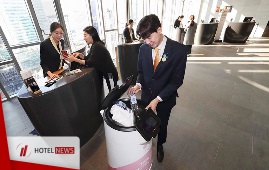
South Korean operator KT has launched its AI-enabled hotel service robot in Seoul. The AI hotel robot, dubbed ‘N bot’, started its official service at Novotel Ambassador Seoul Dongdaemun Hotels & Residences, to serve guests in 100 rooms, Yonhap news agency reports, citing a company statement. KT used 3D location mapping, autonomous driving and AI camera capabilities to develop the robot. Guests can request items through voice command or touch screen of KT's GiGa Genie device in a room, and N bot will identify the location to deliver the items, SK said. With help of its autonomous driving technology, the robot can take an elevator to move from one floor to another and stop or pass by oncoming people to avoid collisions. Back in February, KT opened a robot cafe in the main venue of MWC Barcelona to serve free coffee to visitors. The barista robot served 47 kinds of drinks at the GSMA Innovation City exhibition hall. In October this year, KT announced it will start selling its hotel service offering artificial intelligence-based features to hotels in the Philippines. The service will be gradually expanded to hotels in Singapore, Dubai and Guam. KT recently announced plans to invest KRW 300 billion (approximately USD 256.9 million) in the next four years to develop advanced AI-based services. KT will develop AI technology in the areas of language, image, analysis and problem solving, in an attempt to increase the number of AI-enabled devices to 100 million by 2025.
Create: Dec 7, 2019 Edit: Dec 8, 2019 International News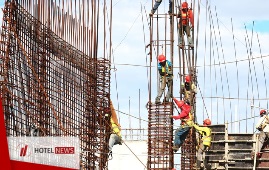
PORTSMOUTH, NH – Analysts at Lodging Econometrics (LE) report that at the end of the third quarter of 2019, China’s total construction pipeline has grown to 3,380 projects/628,972 rooms. Currently, the country has 2,548 projects with 438,797 rooms under construction with projects scheduled to start construction in the next 12 months at 404 projects with 85,026 rooms. Projects in the early planning stage have 428 projects/105,149 rooms. Hotel development continues to thrive despite the continued economic struggles in the region and the on-going trade and tariff disputes with the United States. In the third quarter, China announced 661 new projects with 80,692 rooms into the pipeline. Through the third quarter of 2019, China opened 658 new hotels/92,932 rooms with another 363 new hotels/45,799 rooms forecast to open by year-end. In 2020, 1,084 new hotels with a lofty 157,893 rooms are forecast to open. Should all of these hotels come online in 2020, then China will open the largest number of new hotel rooms since the cyclical peak in 2014. In 2021, following a year of all-time high new hotel openings, LE forecasts that the number of new hotel openings will decelerate to 773 hotels with 135,294 rooms. Chengdu, at a record high 124 projects having 25,560 rooms, leads China’s pipeline. Guangzhou follows standing at 122 projects with 26,105 rooms, then Shanghai at 119 projects/22,581 rooms. Next is Wuhan and Suzhou with 111 projects/15,457 rooms and 88 projects/14,855 rooms, respectively. Also, notable, with strong room counts, are Hangzhou with 73 projects/15,647 rooms and Xi’an with 80 projects/15,054 rooms. Four of the seven cities listed above have pipeline increases in excess of 20% of their existing open and operating supply with Chengdu having a pipeline in excess of 30%. Franchise companies topping China’s construction pipeline are led by Hilton Worldwide with 454 projects/93,644 rooms. Next is InterContinental Hotels Group (IHG) with 375 projects/82,358 rooms and Marriott International with 315 projects/86,151 rooms. All three of these companies are setting record pipeline highs by projects and rooms and account for 34% of China’s total pipeline. Other notable franchise company pipelines are AccorHotels with 218 projects/35,556 rooms and JinJiang Holdings standing at 214 projects/22,548 rooms. Brands in the pipeline are led by Hampton by Hilton with a record 273 projects/42,645 rooms. Hilton’s second largest brand, by project count, is DoubleTree with 59 projects/16,489 rooms. IHG’s primary brands in China are Holiday Inn Express, at a record count, with 179 projects/31,430 rooms and Holiday Inn with a record 61 projects having 15,435 rooms. Marriott International’s top brands are the full-service Marriott Hotel & Resort, hitting record highs, with 73 projects/22,068 rooms and then Courtyard with 39 projects/10,250 rooms. Leading brands for JinJiang Holdings are 7 Days Inn with 113 projects/8,931 rooms, and Vienna Hotel with 26 projects/3,300 rooms. AccorHotels’ leading brand, Ibis, is also hitting all-time highs with 102 projects/10,888 rooms, while Mercure Hotel also has a record number of projects with 58 and totaling 9,346 rooms.
Create: Dec 7, 2019 Edit: Dec 7, 2019 International News
